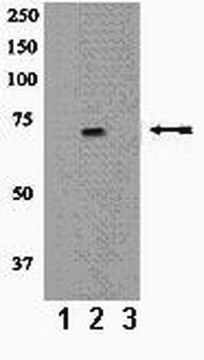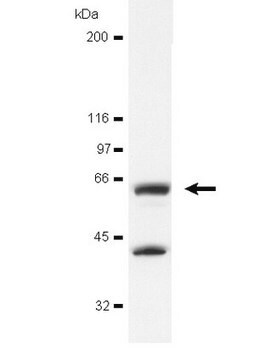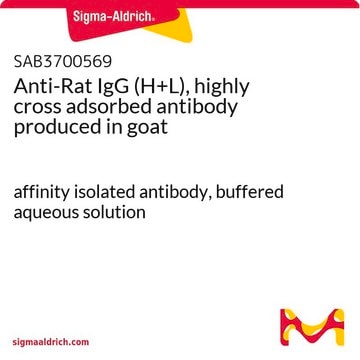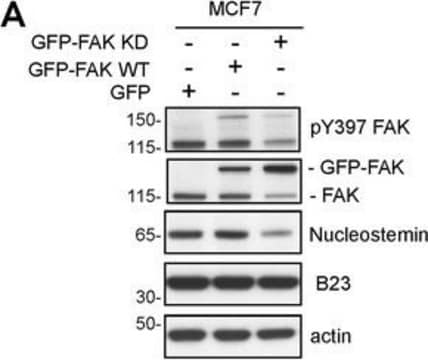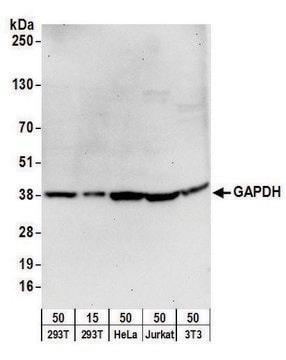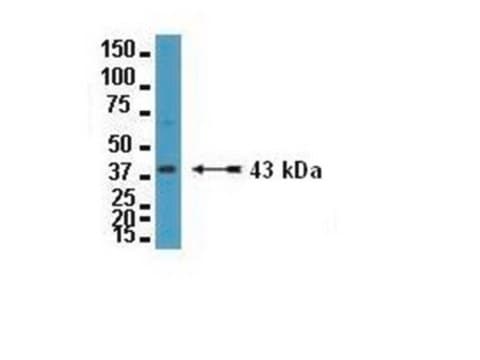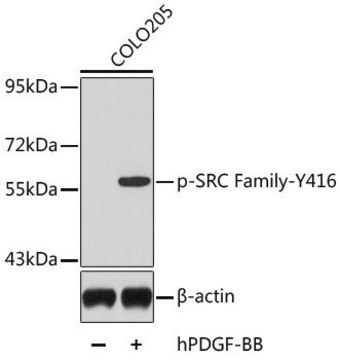05-677
Anti-phospho-Src (Tyr416) Antibody, clone 9A6
clone 9A6, Upstate®, from mouse
Sinonimo/i:
proto-oncogene tyrosine-protein kinase SRC, protooncogene SRC, Rous sarcoma, tyrosine kinase pp60c-src, tyrosine-protein kinase SRC-1, v-src avian sarcoma (Schmidt-Ruppin A-2) viral oncogene homolog, v-src sarcoma (Schmidt-Ruppin A-2) viral oncogene homo
Scegli un formato
553,00 €
Spedizione prevista il18 aprile 2025Dettagli
Scegli un formato
About This Item
553,00 €
Spedizione prevista il18 aprile 2025Dettagli
Prodotti consigliati
Origine biologica
mouse
Livello qualitativo
Forma dell’anticorpo
purified immunoglobulin
Tipo di anticorpo
primary antibodies
Clone
9A6, monoclonal
Reattività contro le specie
mouse, human
Produttore/marchio commerciale
Upstate®
tecniche
immunoprecipitation (IP): suitable
western blot: suitable
Isotipo
IgG3
N° accesso NCBI
N° accesso UniProt
Condizioni di spedizione
wet ice
modifica post-traduzionali bersaglio
phosphorylation (pTyr416)
Informazioni sul gene
human ... SRC(6714)
Descrizione generale
Specificità
Immunogeno
Applicazioni
Signaling
Cytoskeletal Signaling
Qualità
Src Autophosphorylation/Western Blotting Analysis: 0.5-2 μg/mL of this antibody strongly detected recombinant Src (Catalog # 14-326) after incubation with Mg/Mn/ATP. Phospho-specificity was confirmed by dephosphorylation of the Src protein with λ-phosphatase.
Descrizione del bersaglio
Stato fisico
Stoccaggio e stabilità
Risultati analitici
Chick embryo fibroblast (CEF) cells expressing human wild-type Src protein
Altre note
Note legali
Esclusione di responsabilità
Non trovi il prodotto giusto?
Prova il nostro Motore di ricerca dei prodotti.
Codice della classe di stoccaggio
11 - Combustible Solids
Classe di pericolosità dell'acqua (WGK)
WGK 3
Certificati d'analisi (COA)
Cerca il Certificati d'analisi (COA) digitando il numero di lotto/batch corrispondente. I numeri di lotto o di batch sono stampati sull'etichetta dei prodotti dopo la parola ‘Lotto’ o ‘Batch’.
Possiedi già questo prodotto?
I documenti relativi ai prodotti acquistati recentemente sono disponibili nell’Archivio dei documenti.
Filtri attivi
Il team dei nostri ricercatori vanta grande esperienza in tutte le aree della ricerca quali Life Science, scienza dei materiali, sintesi chimica, cromatografia, discipline analitiche, ecc..
Contatta l'Assistenza Tecnica.
